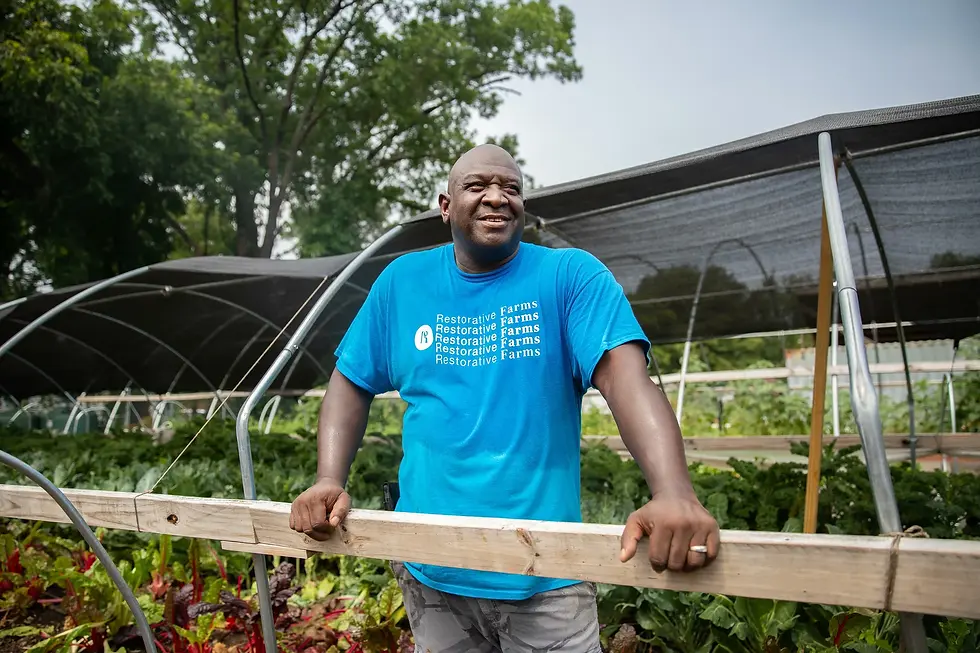Restorative Justice: Sowing the Seeds for a Greener, Fairer Future
- Mar 9, 2024
- 3 min read
In the shadow of sprawling concrete and steel, where freedom is curtailed, a quiet revolution brews—a testament to resilience, restoration, and the indomitable spirit of growth. This revolution, emerging at the crossroads of environmental regeneration and prison reform, champions a novel approach to restorative justice that seeks to heal individuals and communities and the very land beneath our feet. It's a movement that challenges the narrative, daring to reimagine the role of those behind bars in fostering ecological and societal healing.

At the heart of this transformative endeavor are projects that marry the principles of regenerative agriculture with the rehabilitative needs of inmates. Often overlooked in the broader discourse on criminal justice and environmental sustainability, these initiatives represent a profound rethinking of rehabilitation and restitution. They pivot away from the punitive, leaning into the restorative—where nurturing life from the soil becomes a metaphor for personal and communal redemption.
In these programs, inmates engage hands-on with the earth, planting, nurturing, and tending to gardens that flourish within the confines of prison walls. But their impact extends beyond these barriers, spilling into urban lots and rural fields marred by neglect or pollution. Here, individuals whom society often deems fallen are sowing the seeds of new beginnings for the land and their lives. Through cultivating crops and rehabilitating ecosystems, they embark on a journey of self-discovery, learning the value of care, stewardship, and the interconnectedness of all life.
This narrative of healing and redemption gains potency against the backdrop of our current environmental and social crises. In a world grappling with climate change, ecological degradation, and deep-seated social inequalities, these projects offer a beacon of hope—a model of how empathy, understanding, and a commitment to collective well-being can pave the way toward a more sustainable and just future.
Examples of where this innovative intersection is playing out include Planting Justice, where formerly incarcerated individuals find employment in urban agriculture, transforming both their lives and the landscape in Oakland, California; the Insight Garden Program, which brings the rehabilitative power of gardening to inmates in San Quentin State Prison; and the Sustainability in Prisons Project, a collaboration between the Washington State Department of Corrections and The Evergreen State College, engaging inmates in environmental education and conservation projects. These initiatives exemplify the profound impact of merging restorative justice with environmental regeneration, offering paths toward personal redemption and ecological healing.
Yet, the path of restorative justice is fraught with challenges. It demands a radical shift in perspective, a willingness to see beyond the crimes to the potential within each individual for growth, change, and contribution to the greater good. It requires policies that support rather than stifle such transformative endeavors and a society that values rehabilitation over punishment and understanding over judgment.
As this movement gains momentum, fueled by the success stories of inmates turned gardeners, environmental stewards, and advocates for change, it invites us to reconsider our roles in the tapestry of life. It challenges us to question the narratives we've been told about justice, rehabilitation, and environmental stewardship. Ultimately, it beckons us toward a future where every act of healing—be it of the land, the individual, or the community—is recognized as a step toward regenerating the world we share.
In embracing this vision of restorative justice, we acknowledge the profound capacity for renewal within the land and the human spirit. We affirm that redemption is possible, that from the depths of despair can spring forth hope, and from the barrenness of neglected soil can bloom a future prosperous with possibility. This is the promise of the quiet revolution unfolding at the intersection of regeneration and prison reform—a promise that, in healing our landscapes, we might also find a way to mend ourselves and our communities.







